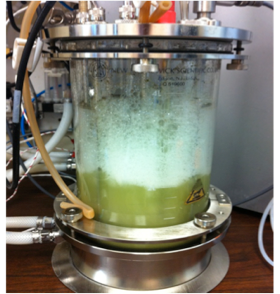Methods for Producing Biliverdin IXa from a Non-Animal Source
Methods to produce biliverdin IXa using Escheria coli.
Problem
Using biliverdin IXα as a cytoprotective therapeutic is frequently suggested, but its clinical development and use is currently limited by insufficient quantity, uncertain purity, and derivation from mammalian materials.
Solution
To address these limitations, methods to produce, recover, and purify biliverdin IXα from bacterial cultures of Escherichia coli were investigated and developed. Recombinant E. coli strains BL21(HO1) and BL21(mHO1) expressing cyanobacterial heme oxygenase gene HO1 and a sequence modified version (mHO1) optimized for E. coli expression, respectively, were constructed and shown to produce biliverdin IXα in batch and fed-batch bioreactor cultures.
Benefits
• Produced from a non-animal source
• Highly pure
• Scalable production by E. coli in bioreactors
• Natural product
• Both an antioxidant and anti-inflammatory
• Covers broader scope of treatment than other anti-inflammatories
Applications
Biliverdin IXα is a naturally occurring anti-inflammatory and antioxidant compound. Biliverdin IXα may be used inter alia for the treatment of both acute and chronic inflammatory conditions and diseases, in surgical applications, as well as in organ preservation solutions. Biliverdin IXα also acts as a cytoprotectant of pancreatic islets used in allograft transplantation procedures to reverse Type I diabetes and is known to suppress reactive oxygen species formation and oxidative stress in a number of tissues and cultured animal cells.
Potential commercial partners include:
• Pharmaceutical companies
• Organ transplant groups
• Medical and chemical supply companies

Contact
Questions about this technology including licensing availability can be directed to:
Christian S. Iverson, MBA
Executive Director, Technology Transfer Services
(435) 797-9620 christian.iverson@usu.edu
USU IDs:
C09069
C11058
Development Stage
TRL 4

